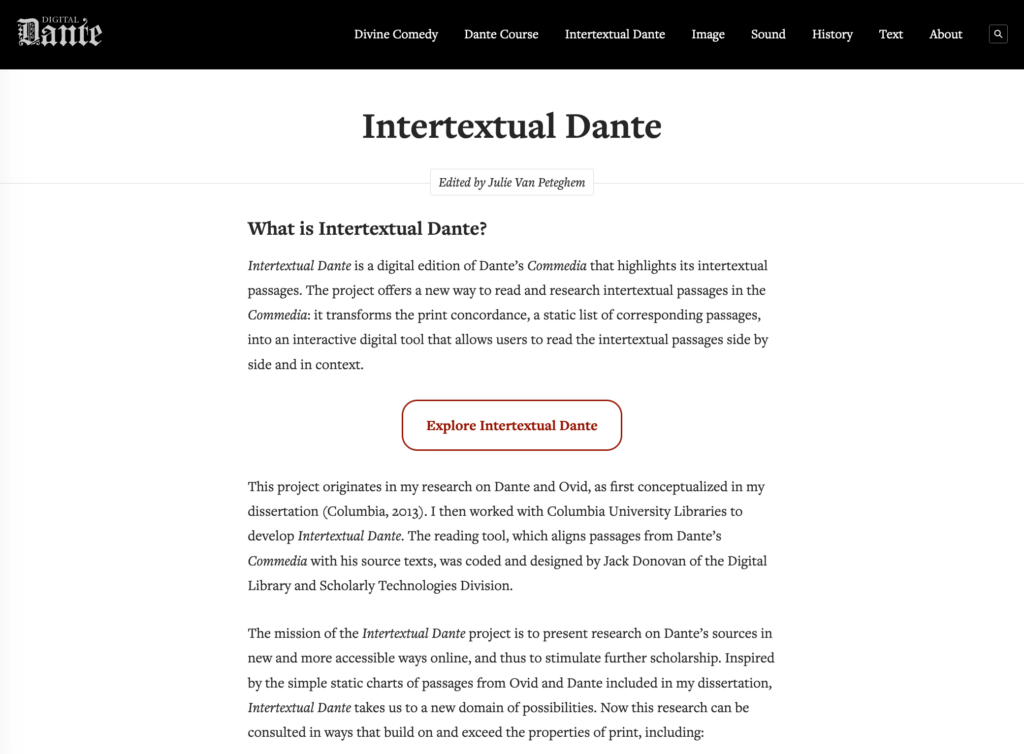Books
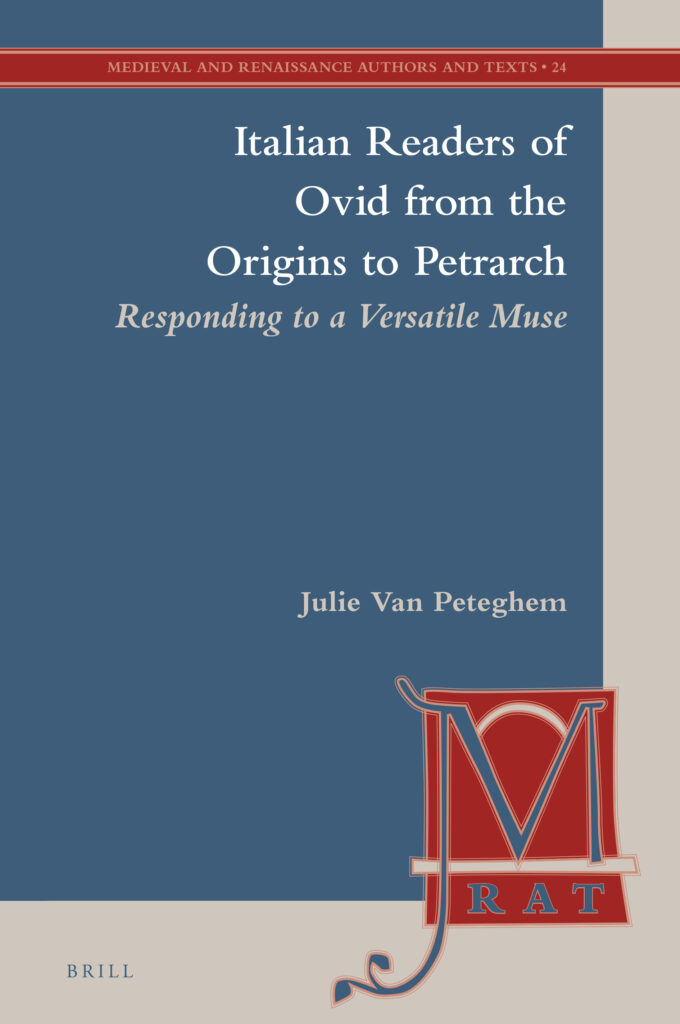
Italian Readers of Ovid from the Origins to Petrarch: Responding to a Versatile Muse (Brill, 2020)
The Latin poet Ovid continues to fascinate readers today. In this book, I examine what drew medieval Italian writers to the Latin poet’s works, characters, and themes. While accounts of Ovid’s influence in Italy often start with Dante’s Divine Comedy, this book shows that mentions of Ovid are found in some of the earliest poems written in Italian, and remain a constant feature of Italian poetry over time. By situating the poetry of the Sicilians, Dante, Cino da Pistoia, and Petrarch within the rich and diverse history of reading, translating, and adapting Ovid’s works, I offer a novel account of the reception of Ovid in thirteenth- and fourteenth-century Italy.
Winner of the 2019 CUNY Book Completion Award
Essays
“Un bestseller nel bestseller: Ovidio in Dante,” in I bestsellers del Medioevo e della prima Età Moderna: Tra evasione, studio e devozione, ed. Elisabetta Caldelli, Arte in questione Series (Edizioni Efesto, 2023): 213-24.
Le Metamorfosi, l’opera per cui il poeta latino Ovidio è più conosciuto oggigiorno, fu anche il poema ovidiano più importante per Dante nella creazione del proprio futuro bestseller, la Divina Commedia. Questo saggio offre una panoramica dei vari formati in cui le opere di Ovidio, e in particolare le Metamorfosi, venivano lette ai tempi di Dante, individuando vari bestseller tra i commenti alle Metamorfosi e le prime traduzioni delle opere ovidiane. Le numerose allusioni ed echi alle Metamorfosi nella Commedia (in un numero significativamente più alto di qualsiasi altra opera ovidiana) rivelano la profonda familiarità e la preferenza di Dante per il poema più noto di Ovidio. Ripercorrendo la vicenda di Ovidio come personaggio letterario dal Tesoretto di Brunetto Latini alla Commedia, questo saggio illustra le principali caratteristiche della tradizione ovidiana nel Due e Trecento italiano. Attraverso le presenze ed assenze di Ovidio come personaggio letterario e fonte nella Commedia, Dante crea un modo suo per continuare la lettura di Ovidio, come ‘profetizzato’ dal poeta latino nella conclusione del suo poema: «ore legar populi» (Met. XV 878).


(with Jennifer Newman) “‘Who Made This Book?’ Teaching Information Literacy through Book History,” in Teaching the History of the Book, eds. Matteo Pangallo and Emily B. Todd (University of Massachusetts Press, forthcoming in 2023)
A collaboration between a librarian and a literature professor at a public college in New York City, this chapter presents a model for using book history lessons to integrate information literacy concepts into undergraduate liberal arts courses. Discussing a series of library activities developed for a medieval Italian literature course, we show how an introduction to analytical bibliography can provide students with vocabulary and skills to think critically about authority, information creation, and the scholarly conversation in both historical and contemporary contexts. While the details of the sample lessons presented here are discipline specific, we used an active learning approach that can be applied in various other fields, and with limited access to special collections.
The library lesson plans discussed in this chapter were recognized with the 2022 MLA-EBSCO Collaboration for Information Literacy Prize
“Exploring Dante’s Sources Online: Interactive Reading, Visualizations, and the Study of Dantean Intertextuality in the Digital Age,” Bibliotheca Dantesca: Journal of Dante Studies 5 (2022): Article 11
Dante’s Commedia is a highly allusive text, and readers throughout time have noted the many parallels between Dante’s verses and those of others. Now that the text of the Commedia and various scholarly and artistic interpretations of the poem (commentaries, translations, illuminated manuscripts) have become accessible online, also the concordance, the lists of parallel passages in Dante’s poem and other works, has become a digital resource. In this essay I explore the study of Dante’s sources in a digital environment mainly through the Intertextual Dante project and its Dante-Ovid edition, published on Digital Dante. Intertextual Dante visualizes moments of Dante’s text reuse: its interactive reading interface presents parallel passages side by side, and allows users to search, analyze, and interpret these passages in their broader textual contexts. I further review the advances in (semi-)automated detection of text reuse are reviewed in the context of Dante’s allusive and intertextual practices, and consider the knowledge base on Dante’s use of primary sources and the commentaries on the Commedia that the Hypermedia Dante Network project will provide.
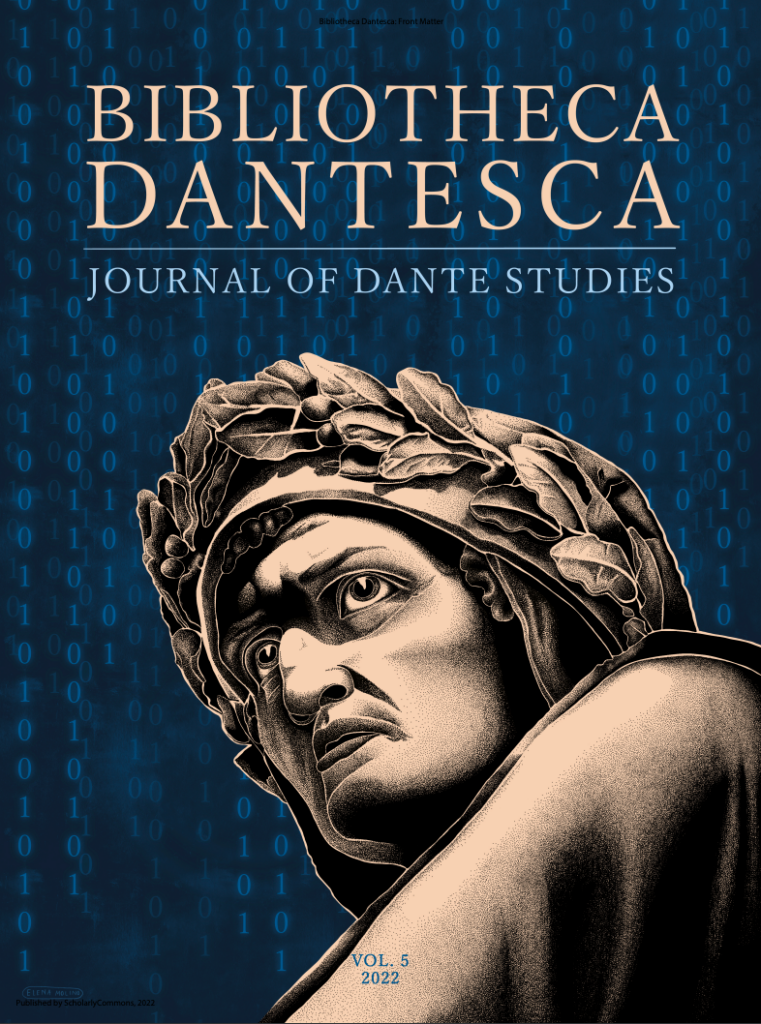
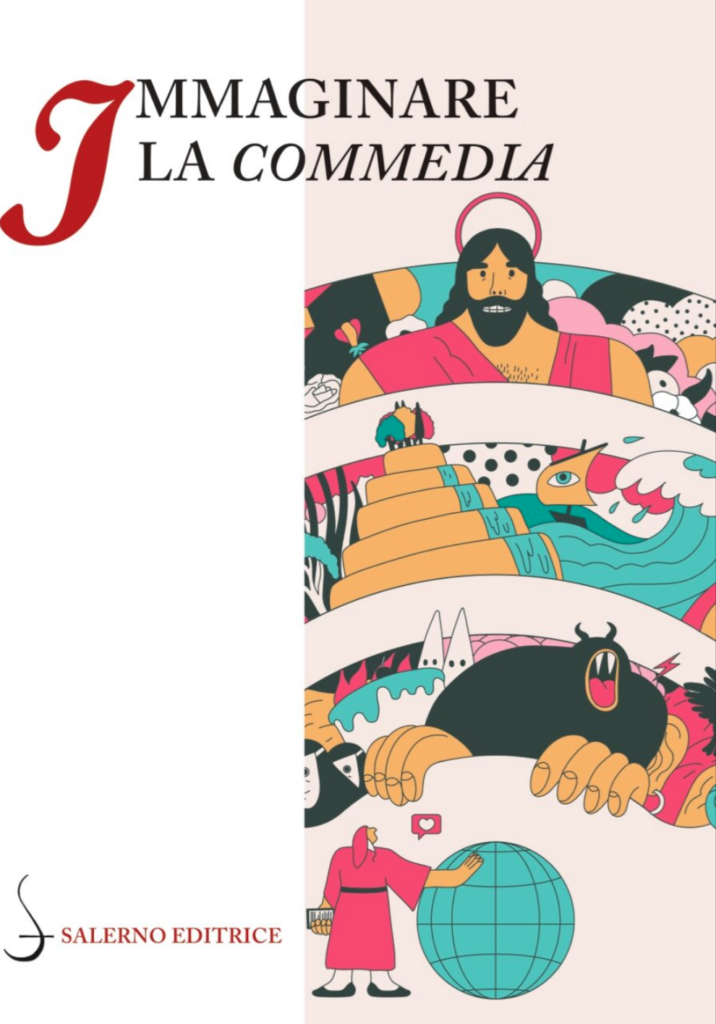
“Digital Dante: Raffigurare Dante online,” in Immaginare la Commedia, ed. Ciro Perna (Salerno Editrice, 2022), 215-23
Un sito accademico ad accesso aperto, Digital Dante, rilanciato nel 2013 (digitaldante.columbia.edu), pubblica contributi di ricerca originali sulle opere, il pensiero, il mondo e la ricezione di Dante Alighieri, creati specificamente per i mezzi digitali e valutati da un comitato editoriale sotto la direzione di Teodolinda Barolini. Con questa panoramica di Digital Dante si vuole identificare non solo le caratteristiche prevalenti dei contributi e dei progetti principali del sito, ma anche sottolineare la diversità di metodi e punti di vista. Non domina un singolo approccio o una specifica tecnica digitale; sarebbe impreciso considerare Digital Dante una pubblicazione accademica digitale, un unico progetto di Digital Humanities. Rispetto al sito originale di quasi trent’anni fa, sono cambiati il contenuto, l’apparenza e il pubblico, e il sito attuale continua a espandersi, ma rimane sempre cruciale il proposito iniziale di esplorare nuovi modi per presentare e studiare Dante online.
(with Akash Kumar) “Digital Dante: Reimagining Dante in a Virtual World,” L’Illustrazione 5 (2021): 211-22
Columbia University’s Digital Dante was conceived in the 1990s as an innovation in digital learning technologies. Since it was relaunched in 2014, it has evolved into a much more ambitious and scholarly project that reimagines Dante’s texts and worlds. Digital Dante offers original research and ideas on Dante: on his thought and work and on various aspects of his reception. In both our edition of Dante’s Commedia and the scholarship that we publish, we emphasize the interaction of the visual with the textual. In this essay, we will present various aspects of Digital Dante through the lens of thinking about the Commedia as «our premier virtual reality». We seek to recreate the medieval experience of reading a text as a multisensory immersion now in the digital realm.
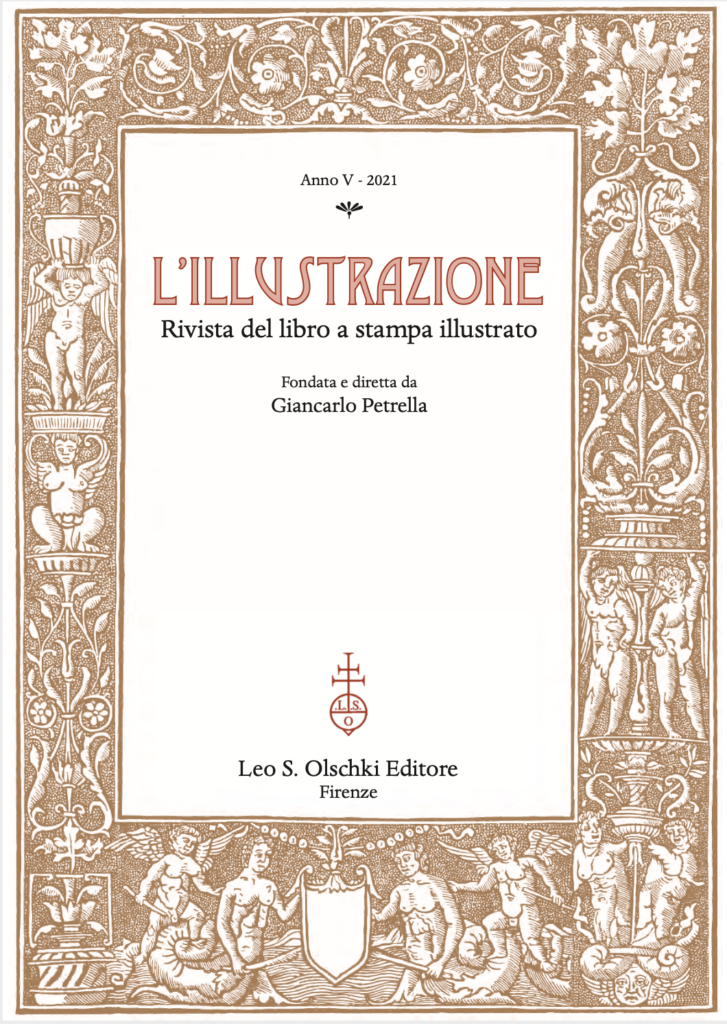
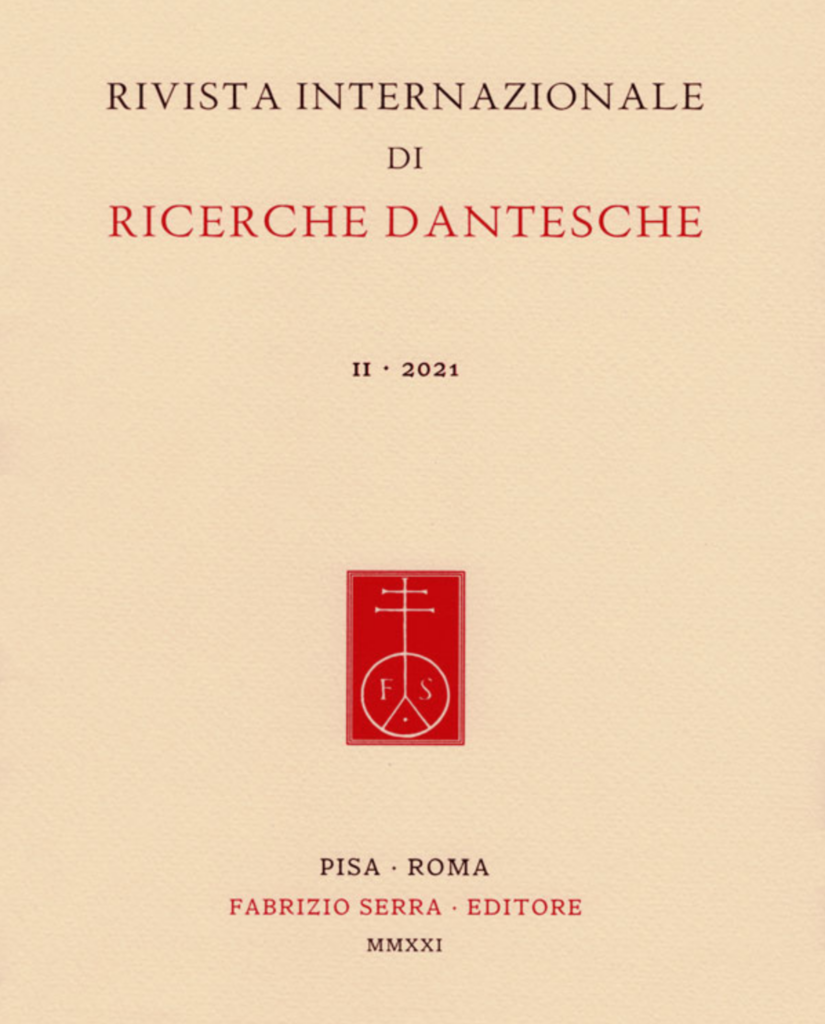
“The Other Women of Dante’s Rime Petrose (Medusa, Clytie, Dido): Ovidian Transformations in Medieval Italian Poetry,” Rivista internazionale di ricerche dantesche 2 (2021): 129-42
In the rime petrose, Dante clearly engages with vernacular poetry – but also with the classics: the petrose have been read alongside passages in Vergil, Lucan, Seneca, and Ovid. This essay centers around Ovid’s presence in the petrose, arguing that in these poems Dante experiments with new ways of integrating classical poetry into vernacular verse. While Occitan and Italian poets before Dante featured Ovid’s characters in their poems in an almost formulaic pattern, in the petrose Dante introduces new ways to identify with Ovidian characters, across time and gender, and other innovations in content and style that distinguish the petrose from earlier vernacular poetry. These Ovidian moments in the petrose, predating the more frequent and obvious references to the Latin poet’s works in Dante’s prose and in the Commedia, not only fill out our understanding of Dante as a reader of Ovid, but also lay the foundation for Dante’s reliance on Ovidian material in the Commedia.
“Dante lettore di Ovidio: Influssi ovidiani e riflessioni metaletterarie nella Commedia,” Studi Danteschi 83 (2018): 149-71
Il poeta latino Ovidio è noto per le tematiche poetiche dell’amore, dei miti e dell’esilio, tematiche ben presenti nella Commedia di Dante. Questo saggio individua come ulteriore fonte di ispirazione per Dante anche la tematica ovidiana dell’arte della scrittura e della riflessione sulla propria creazione artistica. Dimostrando che i ben noti episodi di metapoetica della Commedia sono modellati su simili episodi nell’opera di Ovidio questo saggio propone nuove prospettive sul processo di riscrittura ovidiana: Dante adopera il lessico e le metafore che Ovidio impiega per segnalare la novità e l’importanza della sua scrittura per una finalità analoga.
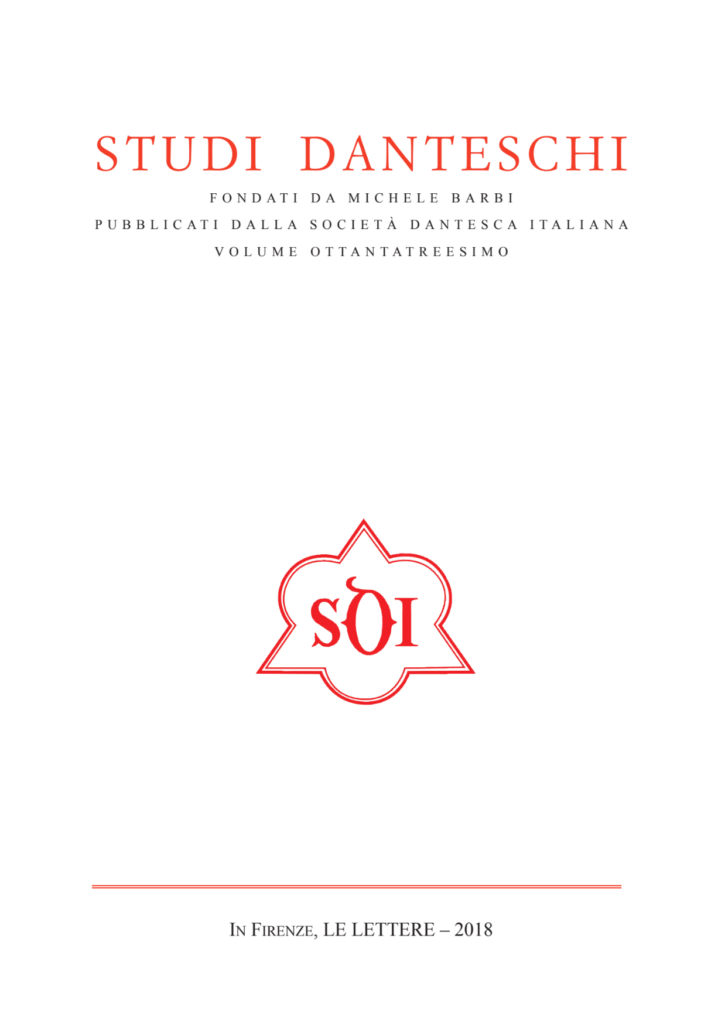

“The Vernacular Roots of Dante’s Reading of Ovid in the Commedia,” Italian Studies 73, no. 3 (2018): 223-39
This essay re-examines the role of Ovid in Dante’s Commedia, complementing the traditional comparisons between Dante’s verses and Ovid’s Latin texts with a different source of Ovidian influence: the references to the Latin poet in Italian vernacular lyric poetry. Finding several precedents for Dante’s treatment of Ovidian material in the Commedia in the poetry of his predecessors and contemporaries, this essay argues that Dante’s Ovidian sources consist of both Ovid’s Latin texts and Ovidian readings in vernacular lyric poetry. Through the analysis of a main feature of such vernacular readings, the evaluation of Ovid’s authority in matters of love in sonnet exchanges, I illustrate the vernacular roots of Dante’s reading of Ovid in the Commedia, and show how Dante draws on the Latin and vernacular Ovidian traditions to define his writing in the Commedia.
“Digital Readers of Allusive Texts: Ovidian Intertextuality in the Commedia and the Digital Concordance on Intertextual Dante,” Lector in Rete: Figures of the Reader in Digital Humanities [Special issue]. Humanist Studies & the Digital Age 4 (2015): 39-59
This essay introduces the notion of a digital concordance as a reading and research tool to explore intertextual passages online, and illustrates how a digital concordance of highly allusive texts can change how we read and research such texts. I take as example the digital concordance on Intertextual Dante, a project on Digital Dante (digitaldante.columbia.edu) developed in collaboration with the Center for Digital Research and Scholarship at Columbia University, which in the first phase highlights the Ovidian intertextuality in Dante’s Divina Commedia. The essay traces the history of the scholarship on Dante’s Ovid, identifying its strengths and limitations, especially of the concordances in print. Since the intertextual passages in the Commedia require a reading not restricted to the obviously corresponding verses, but attentive to the broader textual contexts, I show how the digital concordance on Intertextual Dante greatly facilitates such a contextualized reading. The visualization of the corresponding passages (side by side, highlighted, within context) and the search options (by category of text reuse or by canto/book/poem) help the study of (Ovidian) intertextuality in the Commedia, as illustrated with examples from the site.
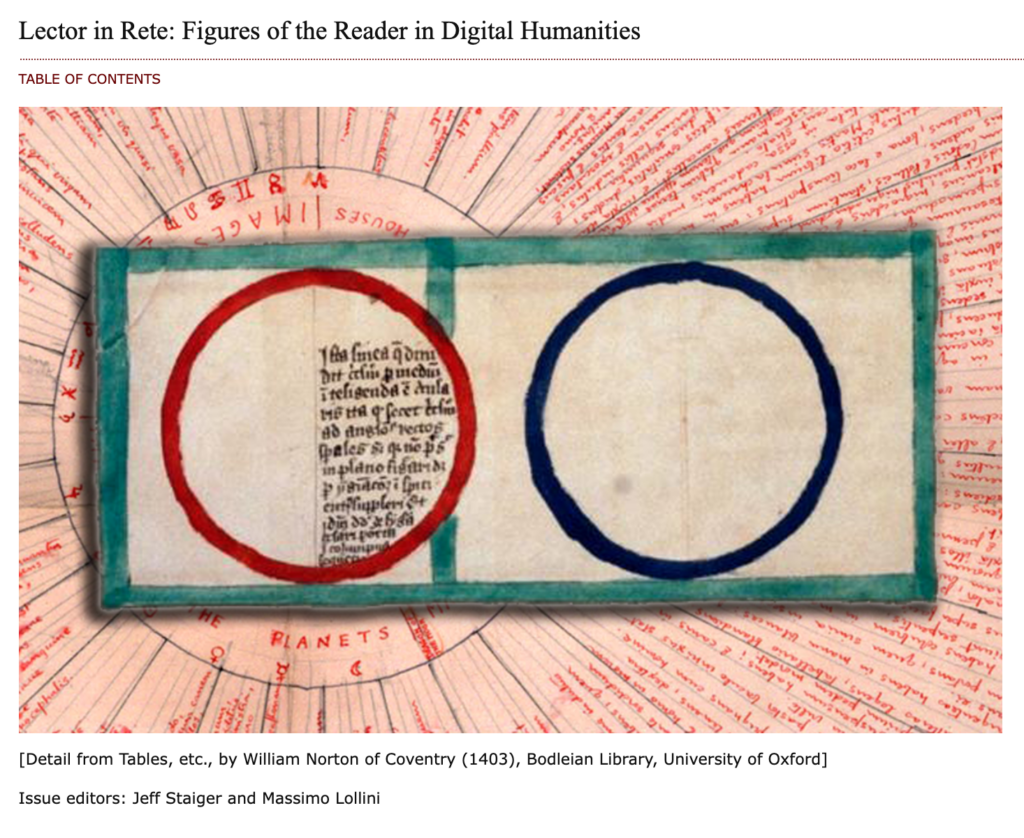
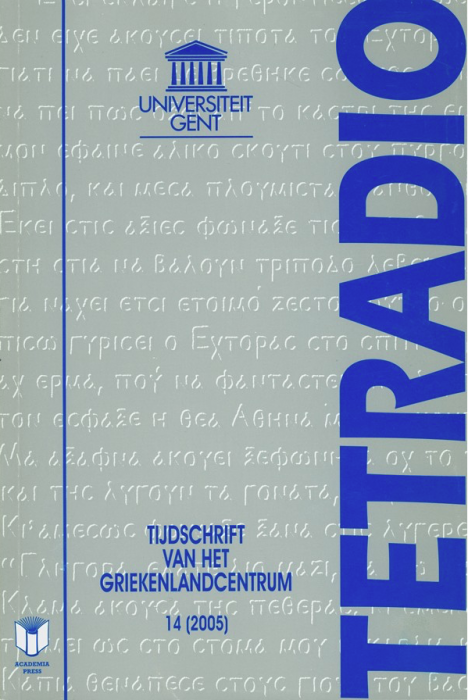
“Umberto Eco’s Baudolino: een lectuur aan de hand van Nicetas Choniates’ Chronike Diegesis,” Tetradio 14 (2005): 153-84
Umberto Eco’s historische roman Baudolino (2000) is een boek vol met citaten en verwijzingen naar andere literaire werken. De Chroike Diegesis van de Byzantijnse historiographer Nicetas Choniates (1155-1217) is waarschijnlijk de minst bekende intertext, maar een van de meest interessante. In dit artikel analyseer ik hoe Eco de persoon en het werk van Choniates in Baudolino heeft geïntegreerd, en hoe dit gerelateerd is met de thema’s van de roman.
Digital Scholarship
Intertextual Dante
Intertextual Dante is a digital edition of Dante’s Commedia that highlights its intertextual passages. The project offers a new way to read and research intertextual passages in the Commedia: it transforms the print concordance, a static list of corresponding passages, into an interactive digital tool that allows users to read the intertextual passages side by side and in context.
https://digitaldante.columbia.edu/intertexual-dante-vanpeteghem/
